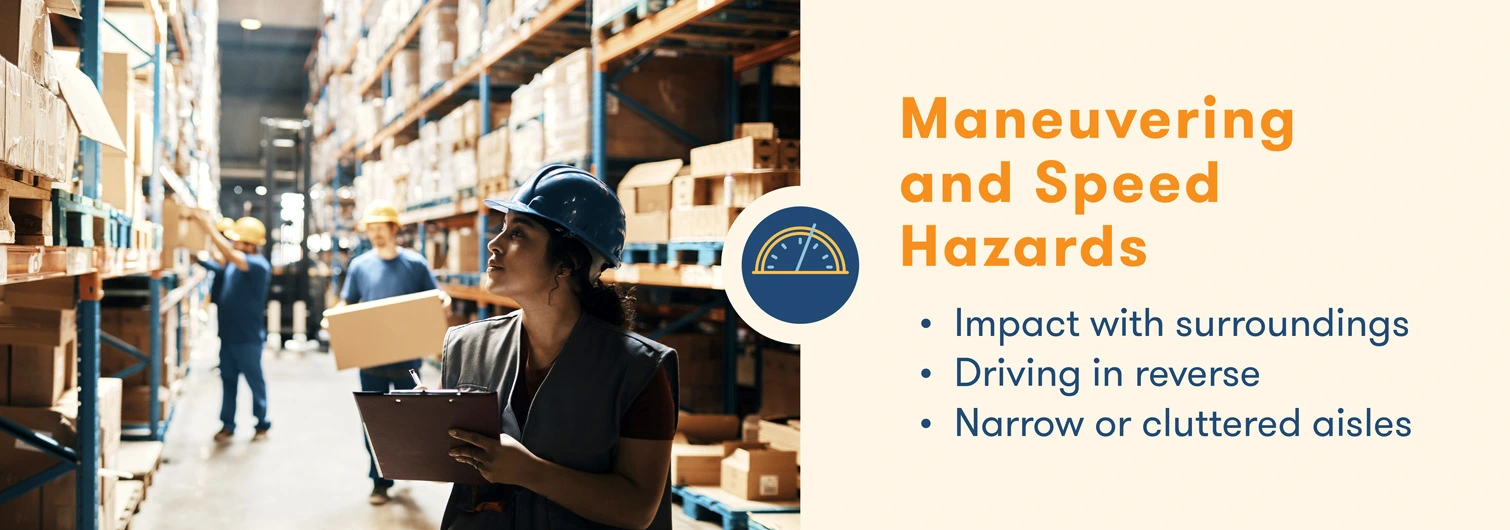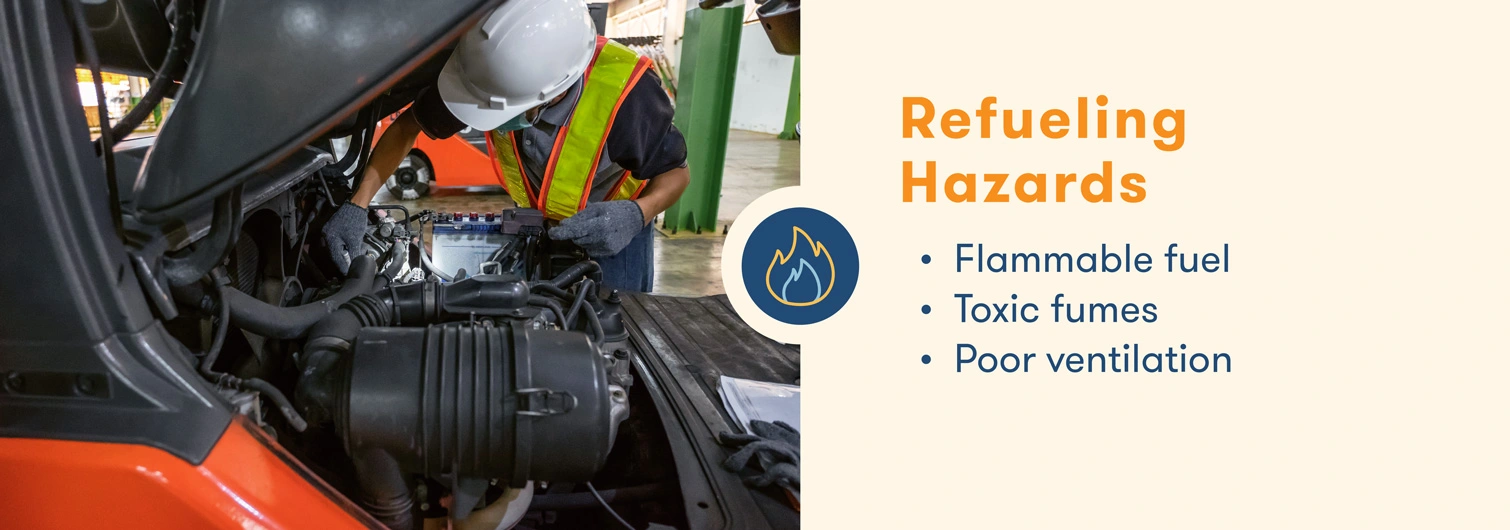Forklifts are powered industrial trucks designed to lift and carry heavy loads. However, like any type of machinery, forklifts pose several hazards on a work site. Factors like new attachments, poorly ventilated work zones and unstable terrain can increase the risk of accidents and fatalities.
Some common risks include overturns, collisions and falls from a forklift. Luckily, employees can avoid these forklift hazards with vigilance and preparedness during operation. In addition to required forklift training, crew members should familiarize themselves with common incidents that can occur at any time. Look at our guide below to see what forklift hazards you should avoid.
1. Attachments
Attachments present several risks since different tools affect a lift’s operating clearances and overall capacity. These attachments also shift a forklift’s center of gravity and reduce its carrying capacity. To minimize danger, operators should acquaint themselves with each attachment’s safety protocols and capacity limits to account for potential operational changes.
Poor maintenance of any attachment or forklift creates additional safety concerns. Worn forks, stretched chains and other run-down parts can put you at risk of an accident. Thoroughly check the entire lift before hauling any materials. These daily inspections prevent accidents and can help you stay ahead on maintenance.
You should also make sure you’re choosing the right forklift and attachment for your specific job. Check out our forklift attachments guide to see which type of lift and attachment best suits your project.
2. Fueling
Refueling and recharging present safety hazards due to fuel’s flammability. Diesel and propane are both flammable, while battery recharging generates combustible gas. Because of this, you should never smoke near a refueling or recharging area. Additionally, poor ventilation heightens the risk of fires and encourages the buildup of toxic fumes like carbon monoxide.
3. Maneuvering and Speed

Improperly driving a forklift can result in its own set of dangers. Drivers may collide with pedestrians and other machines if they aren’t paying close attention to their surroundings. In addition, forklift loads can obstruct the driver’s frontal view, meaning they have to drive in reverse. Rear-end steering makes the forklift take tight turns in the front but swing wide in the back.
Drivers should consider these steering risks when navigating bustling work zones. Narrow or cluttered aisles, high pedestrian traffic and other warehouse safety concerns lessen maneuverability.
Another forklift hazard to look out for is the lift’s speed. Carrying a heavy load at high speeds creates momentum that is hard to stop. To avoid this, forklift operators should follow all posted speed limits and drive cautiously.
4. Blind Spots
Ignoring a forklift’s blind spots can cause unexpected impacts and serious injuries. When full loads block the operator’s view, they aren’t able to see what’s in front of them. So, drivers need to know their forklift’s dimensions and rely on a spotter when maneuvering around blind spots.
Poor lighting and weather conditions also decrease visibility and make it harder to navigate. Operators must learn their route for a project to prepare for potential blind spots, obstacles and other forklift hazards. Employees should direct pedestrians away from in-use forklifts and block off the entire job site when possible.
5. Floor Conditions
The surrounding work area presents several potential risks. If left alone, debris, puddles and unstable ground may cause falls or overturns, so workers should clear the work site of hazards and plan to block off any obstructions before beginning the job.
Ramps also pose a risk due to forklifts’ massive weight. Operators should drive forward with their load in front when driving up a ramp. Conversely, drivers should move in reverse when going down a ramp with their haul. Parking brakes and chocks are a must if you need to park on an incline in an emergency. You should also never turn on ramps.
6. Loads
Loads create additional forklift hazards depending on the weight of a haul. You should always secure your materials before moving the forklift and double-check that the load is stable and below capacity. Any of these mistakes could result in overturns or other accidents. Operate with extra caution when carrying hazardous materials because spills or drops can endanger the entire work zone.
These forklift hazards are important to remember when working in the field. Even one risk can be dangerous if you’re not using the three points of contact method. Awareness at all times and following OSHA regulations for forklifts will help prevent avoidable injuries.
Having the correct type of forklift for your job is also crucial, since loads and terrain will vary between tasks. Take a look at our forklift inventory and find the right lift for your project.















